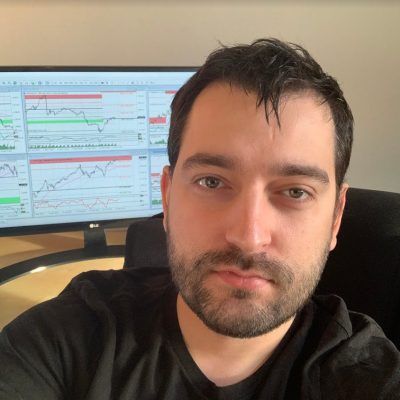
Swing Trading Framework
based on mechanical trading strategies
Learn the Swing Framework and get your edge in trading
I use the same framework as a base in most of my strategies. I created it after countless testing of different ideas and strategies.
In that course I show you what the framework is about and how to build a strategy based on it. We start from simple ones, based on few conditions (like example below) to more advanced:

The big advantage of framework is a mechanical approach. That means that you decide about trade direction and entry based on specific instruments and signals. No second guessing - all you have to do is to follow strategy.
Some important info about framework:
- This framework uses an advanced position management. That allows you to catch both bigger moves and smaller ones.
- Risk management is very strict. We try to take as little losses as possible with smart stop loss movement and break even orders.
- Framework works best on 30m, 1h, 4h and daily time frames, but you can optimize it for lower time frames.
- Created for Forex, commodities and indicies
- Easy to backtest and modify thanks to mechanical approach
- Find complete strategies based on framework - use them or modify them
The best thing about mechanical systems is that they are easy to backtest:

"How this framework can help me?"
It's simple. I show you backtested trading framework that can be your starting point. To be more precise, I show you three most important things when it comes to building a solid strategy:
- when to open a trade, how to manage risk
- when to close a trade and take profit (with partial close approach)
- ready strategies that you can take and modify
You can use the basic framework as it is presented in the course. Or you can modify it, add tools that you prefer.
As long as you follow risk management and take profit strategy based on partial close you should be on the road to build your own working strategy.
Your Instructor

Trader, author of pivot-point-trading.com blog. Over 10 years of experience in trading. I enjoy trading and teaching others how to trade.
I trade mostly with Pivot Points, Fibonacci, and divergence, sometimes with Renko. When I started to use Pivot Points my trading improved a lot so I started to learn and test different strategies.
The next important step was the proper backtesting and building mechanical trading strategies. Emotions in trading can be your worst enemy so I focus on building a mechanical approach.
Now I share my experience with my students who want to learn how to trade better and make money. Most courses out there are about support resistance trading, about price action. They are fine but there is much more to successful trading. That was the reason why I created this MasterClass. I wanted to share with you my knowledge about trading with Pivot Points, Fibonacci, divergence, Renko…